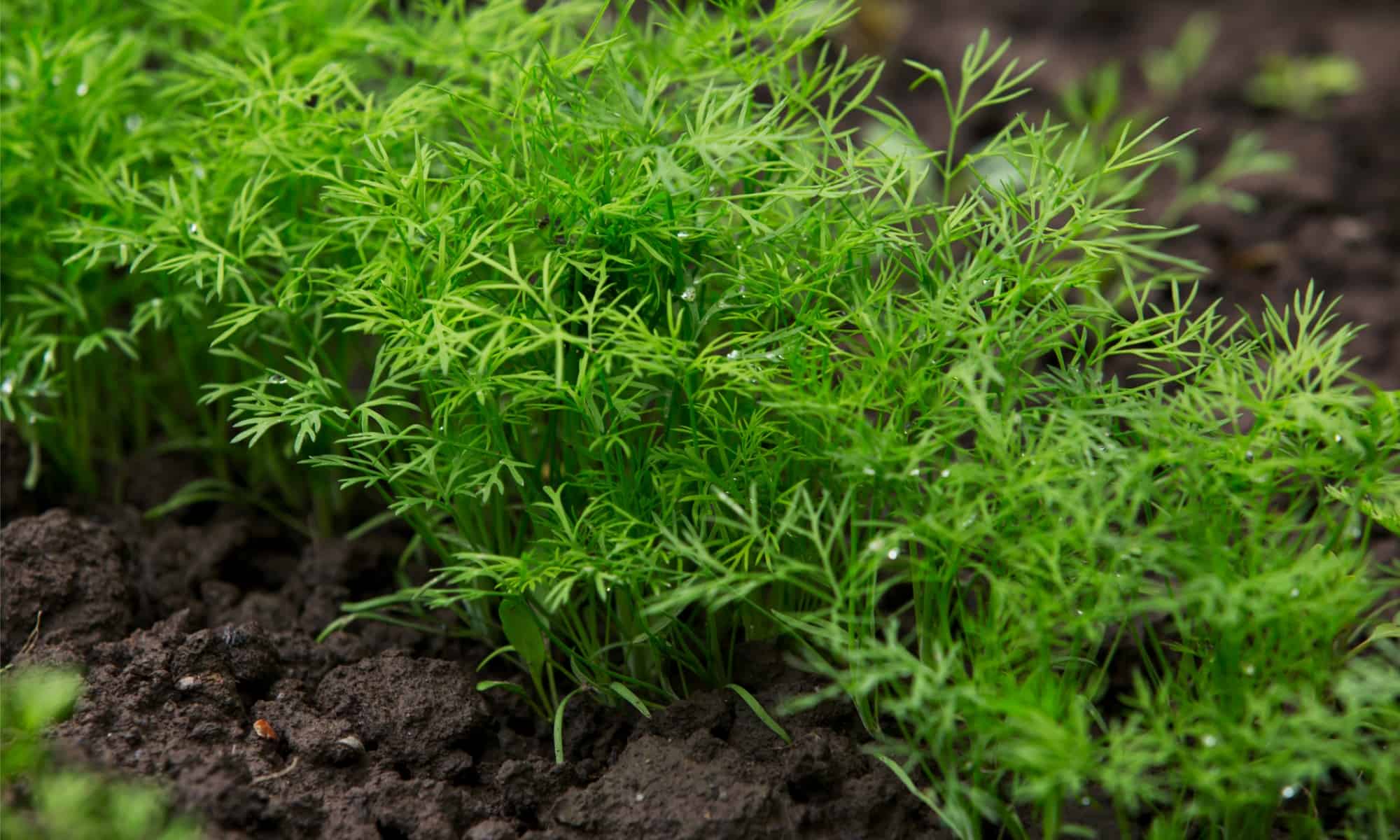Native to northern Africa and the Middle East, people have used dill for thousands of years as an herb and a medicine. Indeed, archaeologists found dill in the tomb of a pharaoh of ancient Egypt who’s believed to have died around 1401 BC. Both the delicate leaves and the seeds of this herb are used. Plants that can be grown near dill have similar requirements for soil, water and sunlight but don’t cross pollinate. These plants are called companions, and some companions not only share space with dill weed but benefit from dill’s pest repelling qualities. In such cases, dill is an ally as well as a companion. Here are some of the best dill companion plants.
Brassicas
According to gardening experts, brassicas, or members of the cabbage family are good dill companion plants. They include:
Brussels Sprouts
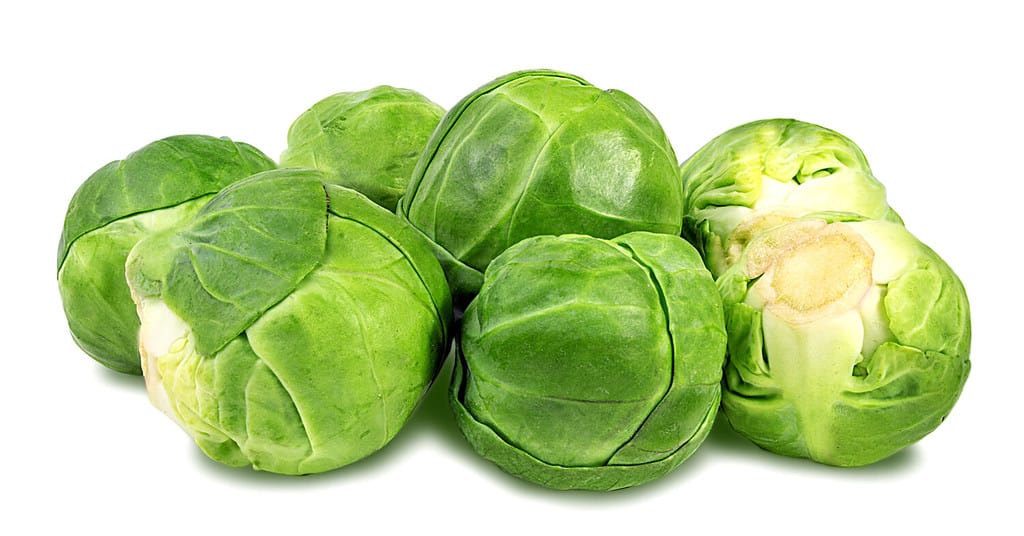
Brussels sprouts should be staked to keep them from falling over in the garden.
©Chatham172/Shutterstock.com
These veggies resemble little cabbages clustered on a stalk, which is basically what they are. They are annual, cool season vegetables, and as they grow they might need staking, as their roots are shallow. Brussels sprouts need their soil to be kept evenly moist. They’re heavy feeders, so use a good amount of compost and manure.
Curly Kale
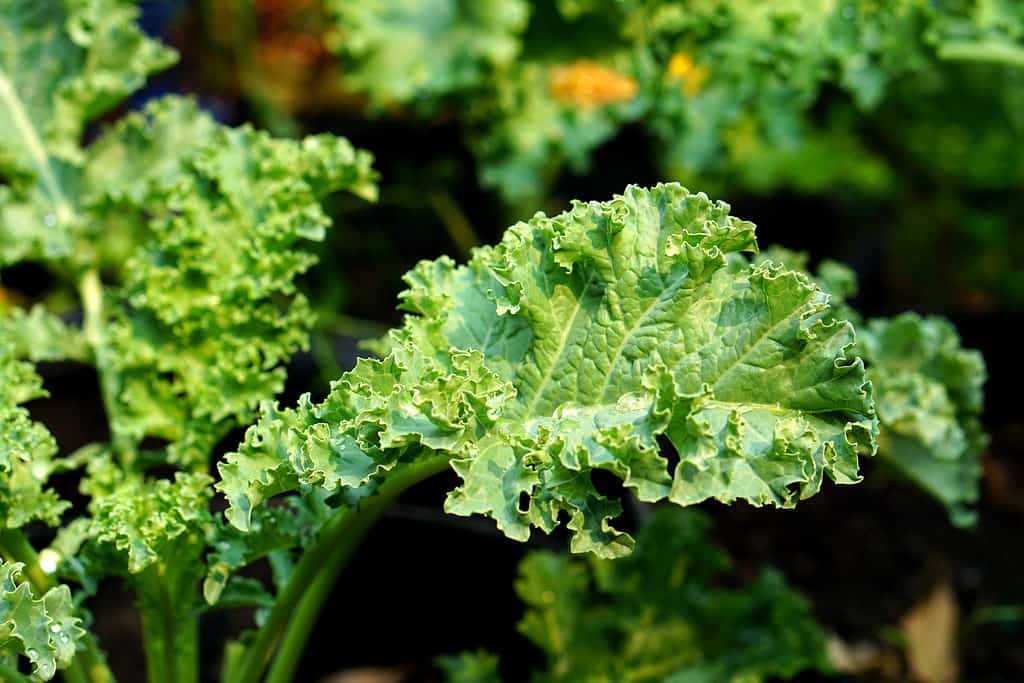
Curly kale is a cool season companion of dill.
©BlueSky_31/Shutterstock.com
Kale is another vegetable that likes cool temperatures, and many gardeners claim that it’s frilly, deep blue-green leaves taste better after a frost. Kale’s easy to grow and seems to resist the types of diseases that plague other types of brassicas such as clubroot. Kale seeds sprout in temperatures between 65 and 95 degrees Fahrenheit, so you can sow them in late summer. However, kale grows best when the temperatures don’t get higher than 65 degrees. Like Brussels sprouts, kale is a heavy feeder and also needs lots of water.
Kohlrabi
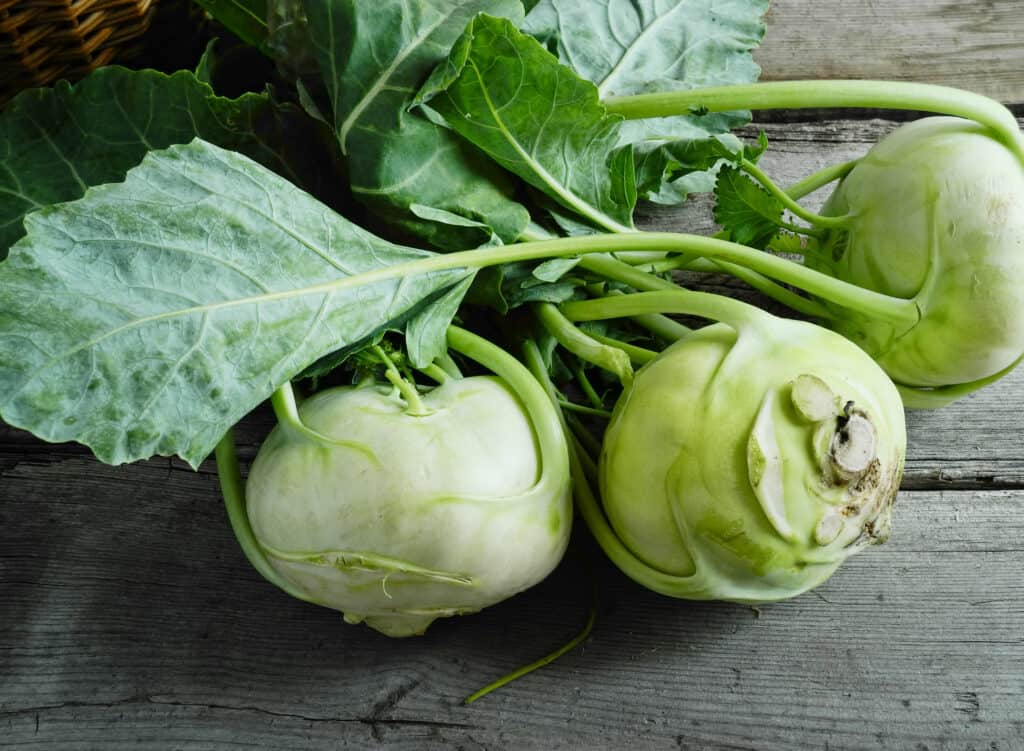
Pick kohlrabi when the globes are small.
©Haskounek/Shutterstock.com
The name of this vegetable means “cabbage turnip” in German, and it’s a brassica that many people aren’t familiar with. In the garden it’s a pale green ball that pops up out of the soil with a crown of dark, edible leaves. Unlike many of its cousins, it can stand some heat though the temperatures of spring and fall are ideal. Though not a heavy feeder, it likes rich soil that drains well and is a bit acidic. Kohlrabi should be harvested when the globes are small. Large globes are described as having a woody taste and are subject to cracking. Diners claim a perfectly harvested and cooked kohlrabi tastes like a cross between an apple and a turnip.
Broccoli
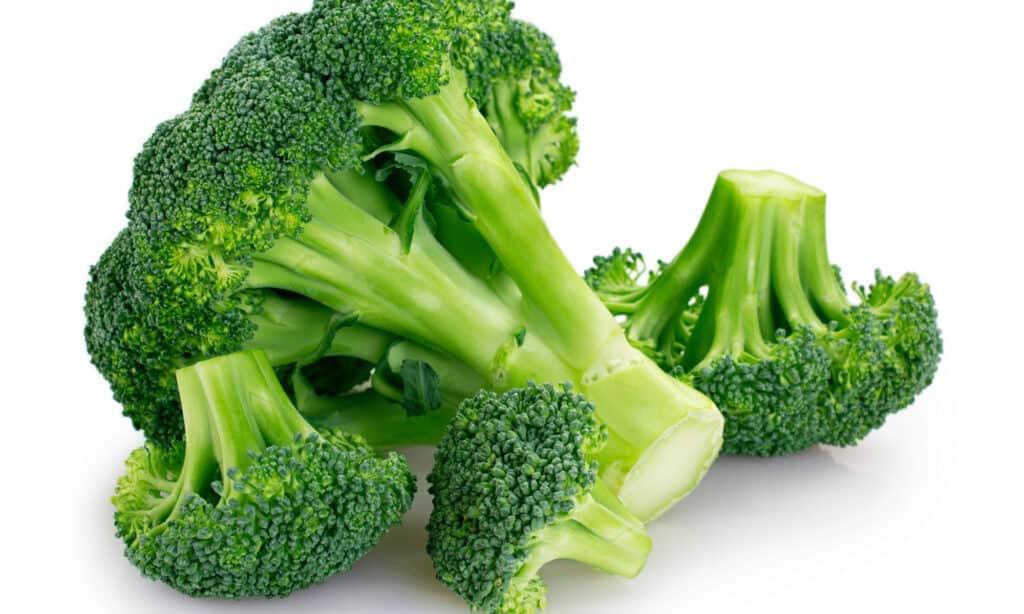
Another good companion of dill, broccoli bolts when temperatures get too high.
©Valery121283/Shutterstock.com
Broccoli is not just another cool season vegetable but doesn’t do well in warm temperatures. If it gets much warmer than 65 degrees F, this veg bolts immediately and is rendered inedible. On the other hand, gardening experts recommend covering seedlings that have been transplanted from indoors. This is to hold in enough heat to help them grow well.
The soil broccoli thrives in has a pH between 6.0 and 7.5, and soil that’s a bit more alkaline deters problems like clubroot. Broccoli also likes its soil to be evenly moist. Like many brassicas, broccoli is a heavy feeder and you should amend the soil with compost and manure before transplanting. Harvest when the heads are tight, deep green-blue or purple.
Cabbage

Some people grow cabbage plants close together so the heads can stay small and flavorful.
©Digihelion/Shutterstock.com
Some gardeners say that cabbage is not a good companion for dill weed, while others say that it is, as it’s a member of the brassica family. Indeed, it is the member of the brassica family. Like broccoli, it bolts if temperatures become too warm and can bear up under frost and light freezes. Like kohlrabi, cabbage tastes better when it’s harvested while its head is still small. There are even people who recommend twisting the head to break the feeder roots so it won’t grow too large. Some gardeners grow cabbage close together for the same reason.
Cabbage needs lots of fertilizing, especially with potassium and nitrogen. If the soil is too acidic, you may need to add lime to make it more alkaline, as an alkaline soil helps to prevent clubroot. The vegetable also needs side dressing every two weeks or so and needs heavy watering when it first germinates.
Cauliflower

Wrap cauliflower heads in their own leaves to keep them snowy white.
©iStock.com/Baloncici
Cauliflower is even less heat tolerant than cabbage or broccoli. It’s tricky to grow in the spring as the warming weather will cause the plant to bolt. If it’s planted near the heat-loving dill weed, it should be planted at the end of summer where its seeds can germinate in temperatures as high as 85 degrees F. It’s also a heavy feeder that needs a good bit of nitrogen and potassium, and it also needs a bit more work than other brassicas. When the brain-like heads of cauliflower start to form, cover it with a few outside leaves and tie the leaves together to protect it from the sun. In the end, you’ll have a snowy white head, unless the cauliflower is a purple varietal.
Turnips and Rutabagas
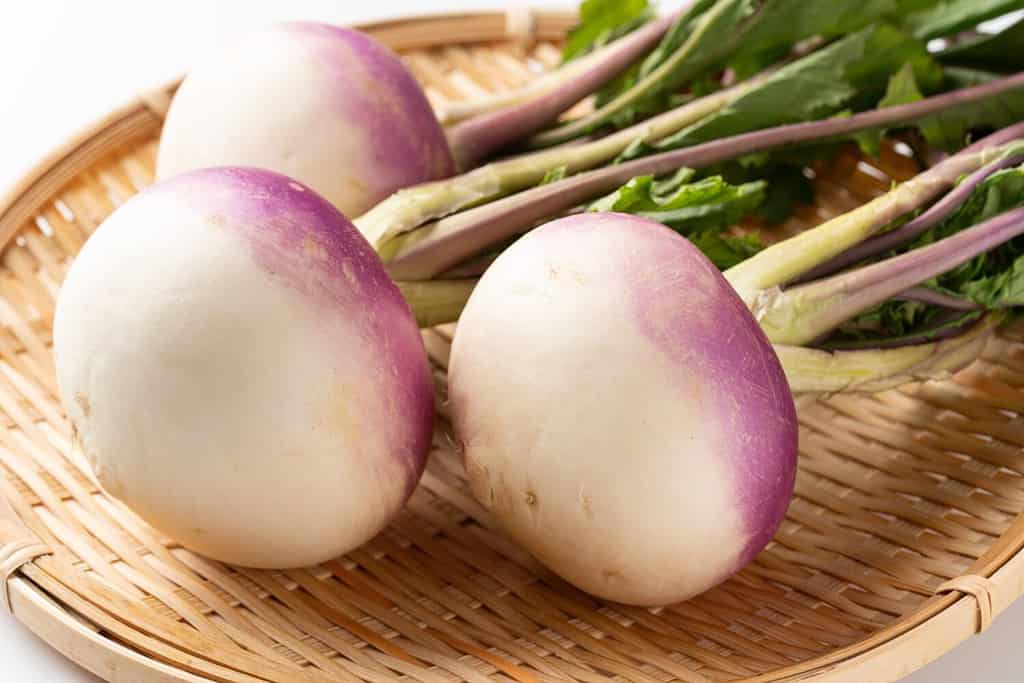
The white and purple colors of these root vegetables identify them as turnips.
©Hanasaki/Shutterstock.com
People are surprised that turnips and rutabagas are members of the brassica family. Both the bulbs and leaves are edible. What’s the difference between a turnip and a rutabaga? Rutabagas are bigger than turnips and are usually a brownish-yellow color. Turnips are white and purple and their flavor is a bit less sweet. Both are cool weather crops that are best harvested in the autumn. They’re said to be more tender than turnips and rutabagas harvested in spring.
These root vegetables don’t need to be started indoors but can be sown in the soil as soon as it can be worked. They like full sun and rich, well-drained soil amended by compost or rotted manure. It only takes a few days for the seeds to sprout, a month before the greens are ready to eat, and two months before the roots are ready.
Collards

Collards are prized in the southern United States.
©iStock.com/Arayabandit
A staple of the southern table, collards are different from most of the other brassicas on this list because they grow well both in the heat of summer and the cool temperatures of fall. They do prefer the cool however, and like kale a touch of frost improves their flavor. The one thing to avoid is to cut collards all the way down to the ground. Pluck off the bottom leaves instead. This allows the central bud to continue to branch and put out more leaves throughout the season. Collards aren’t too fussy about soil, as long as it’s kept evenly moist. They also need a moderate amount of fertilizer.
Mustard Greens
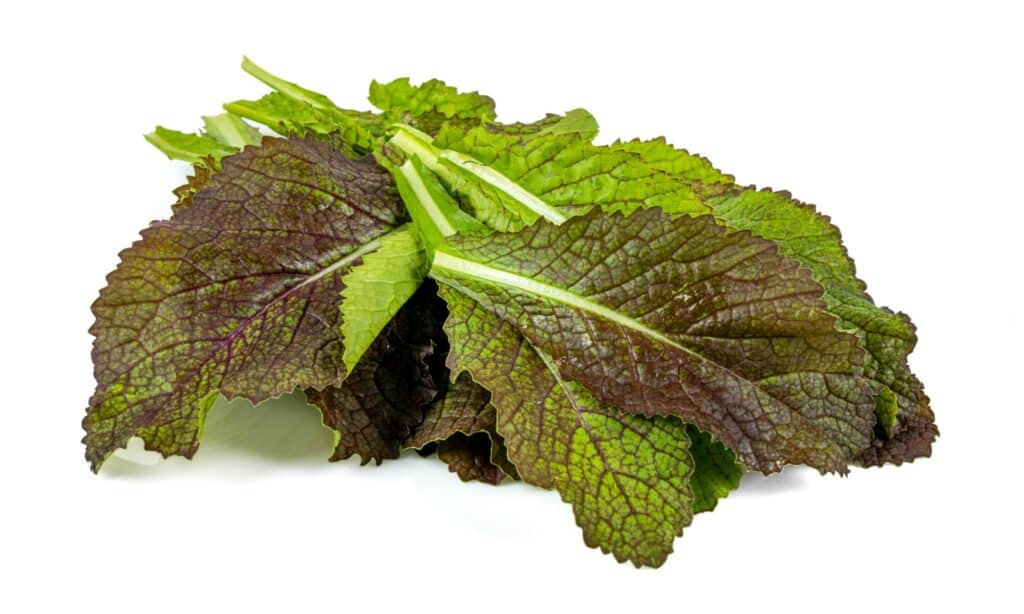
Mustard greens can be green or red.
©iStock.com/yalcinsonat1
You can grow mustard greens much like collards, with the exceptions that you can cut mustard stems all the way down to the ground, and it’s very much a cool weather crop. Warm temperatures cause the plant to bolt, and like kale and collards, a bit of a frost improves the flavor.
Other Dill Companion Plants: Asparagus
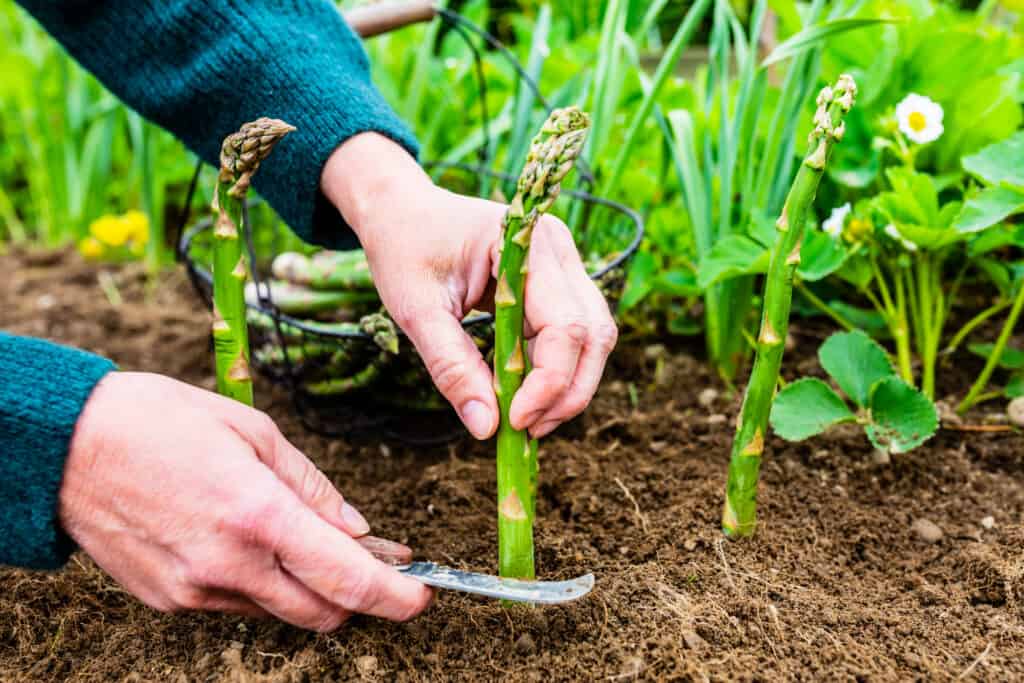
Asparagus is ready to harvest in early spring but takes years to grow.
©iMarzi/Shutterstock.com
The feathery fronds of the asparagus plant resemble those of dill weed, so you might worry that they’ll cross pollinate. But dill and asparagus are not related and are good companion plants. Dill weed attracts the lacewing and ladybugs that feed on the aphids that like to feed on asparagus.
Asparagus are ready to eat much earlier in the season than most other vegetables, but the price for this is the two years — at least — that it takes for the plants to be ready for harvest. It likes soil with a pH of between 6.0, which is a bit acidic, to 8.0, which is more alkaline than other vegetables seem to need. Asparagus is also a heavy feeder that needs a good amount of potassium, phosphorus, and nitrogen. It also needs lots of water and needs to be mulched to protect it during the winter.
Onions

These onions are nearly ready for harvesting.
©nnattalli/Shutterstock.com
Onions and other alliums such as garlic are also welcome companions for dill. The very smell of them dissuades pests such as thrips, Japanese beetles, grubs, and wireworms. Onions are cool weather vegetables, though they can germinate in temperatures as high as 95 degrees F. The soil and water needs of an onion depend on what type of onion it is, but one rule is to stop watering onions a week before you harvest them. Treat them gently after they’re pulled.
Cucumbers
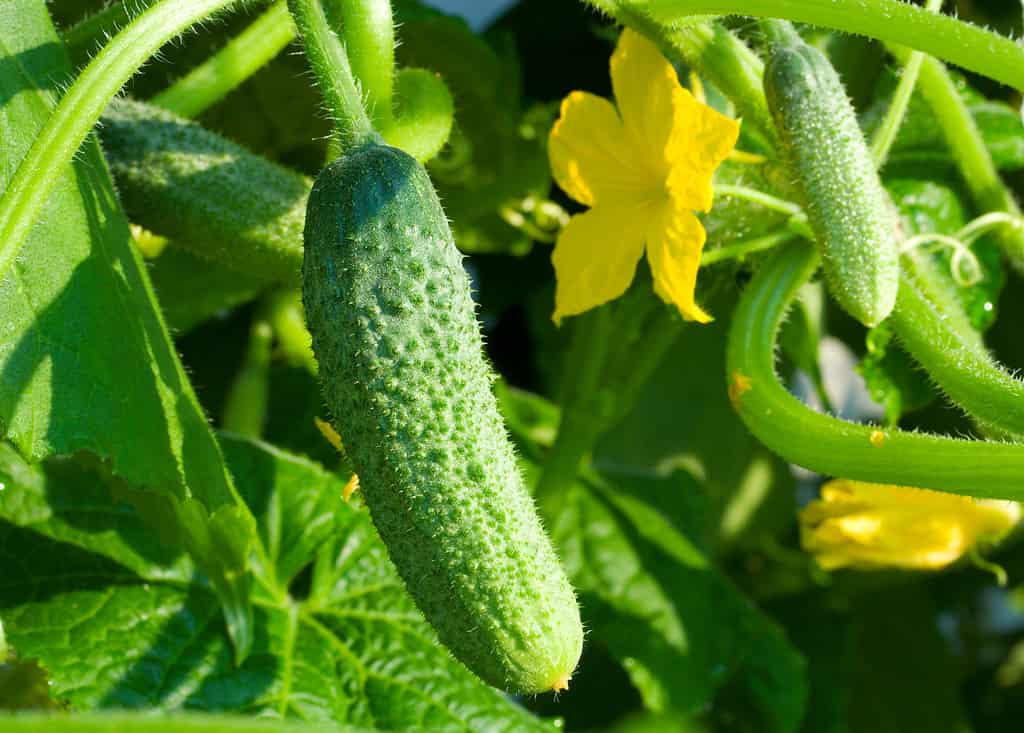
Most cucumber plants have male and female flowers. Female flowers produce the fruit.
©Andrey Shtanko/Shutterstock.com
Cucumbers are good companions for dill, but dill seems to be an ally of cucumbers. This is because dill attracts braconid wasps. These wasps paralyze cucumber beetles and use them to incubate and feed their larvae. There’s also some evidence that dill makes cucumbers taste better. They certainly go well together in salads and other dishes.
A vegetable that loves warm weather, most cucumber plants bear male and female flowers, and they need bees to pollinate them. A successful planting of cucumbers will start exploding with fruit that needs to be picked every day. If not picked, a cucumber can grow to the size of a small watermelon. One good thing is that even a large cucumber, unlike a baseball bat size zucchini, does not lose its cucumber flavor or texture.
Cucumbers are heavy feeders, and you should amend the soil with compost before you plant seeds or seedlings. The plants also need side dressing very two or three weeks, and they need lots of water when they’re fruiting. At other times watering should be deep and even. Since the cucumber is a vine, it’s good to support it on poles, teepees, squash tunnels, trellises, or A-frames.
Corn
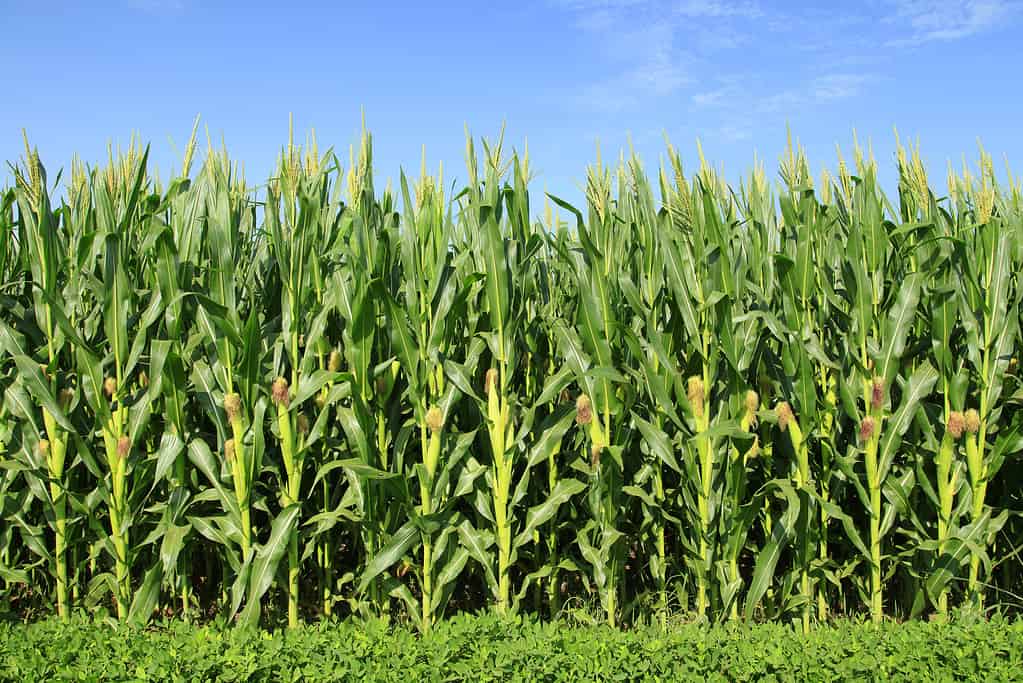
A stalk of sweet corn can grow to 8 feet tall.
©iStock.com/zhengzaishuru
Corn also benefits from the parasitic wasps that are attracted to dill weed, especially if dill is allowed to flower. Like cucumbers, corn is a warm season vegetable. There are different types of corn, and they cross-pollinate easily. If you don’t want this, make sure you buy only one type to plant in your garden. Corn needs lots of fertilizing, and most gardeners add compost to the soil a few weeks before planting the seeds. They then add rotted manure in the fall and side dress every two weeks. Water moderately and increase when you see the stalks flowering.
Lettuce
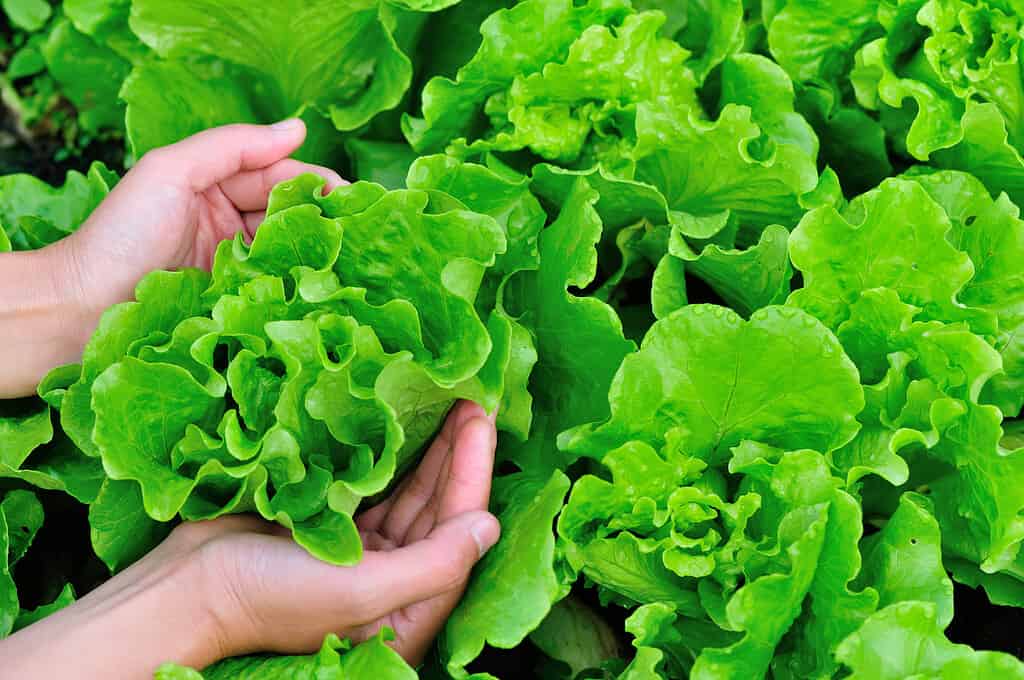
Lettuces are excellent dill companion plants.
©lzf/Shutterstock.com
A cool season crop, lettuce is a favorite of pests unless it’s planted close to dill and its population of braconid wasps, ladybugs, and lacewings. There are two basic types of lettuce. They’re head lettuce and non-head lettuce, and gardeners believe that head lettuces, though sweeter in flavor, are harder to grow. These vegetables, so necessary for salads, don’t grow well in acidic soil. You might want to add lime to your soil to make sure the pH doesn’t go below 6.5.
Lettuce is also different from most garden veggies in that it can flourish in the shade, specially in warm weather. It is a heavy feeder but doesn’t need much watering in places that get adequate rainfall. water lettuce early in the morning to cut down on diseases such as lettuce drop and fusarium wilt.
Fruit Trees
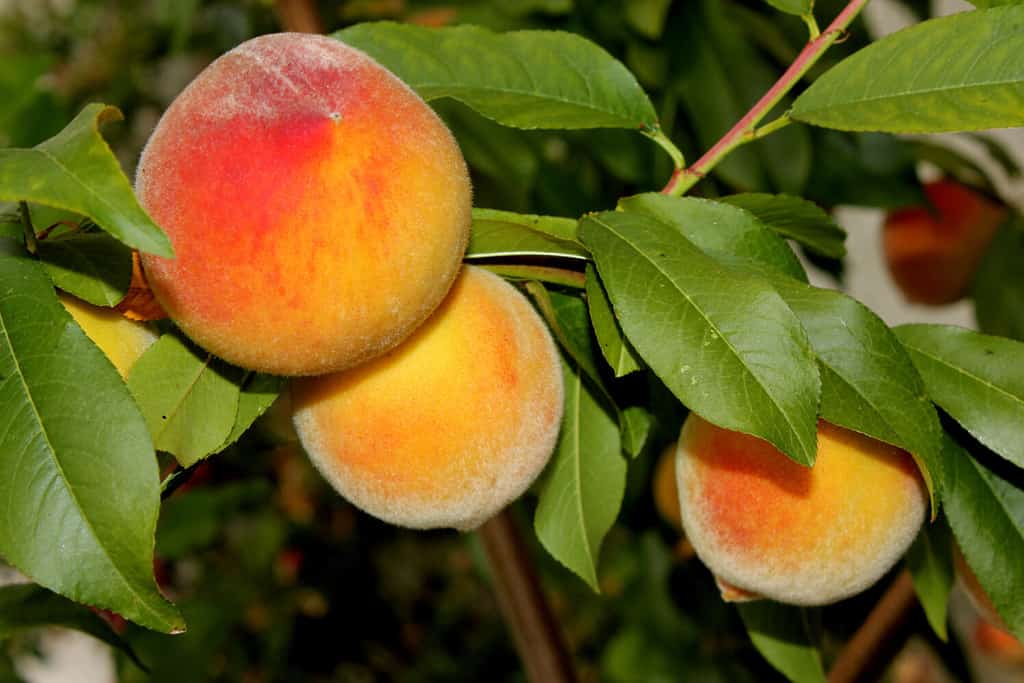
Peach trees are one of the fruit trees that are good dill companion plants.
©Gurcharan Singh/Shutterstock.com
Fruit trees also make good companions for dill. They include:
- Apples
- Pears
- Apricots
- Peaches
- Cherry Trees
- Plums
Plants that shouldn’t be put near dill weed include caraway, fennel, and carrots. These plants are too closely related to dill and may cross-pollinate with it and stunt its growth.
Thank you for reading! Have some feedback for us? Contact the AZ Animals editorial team.

